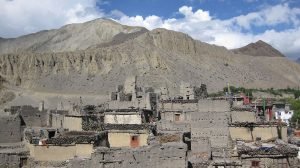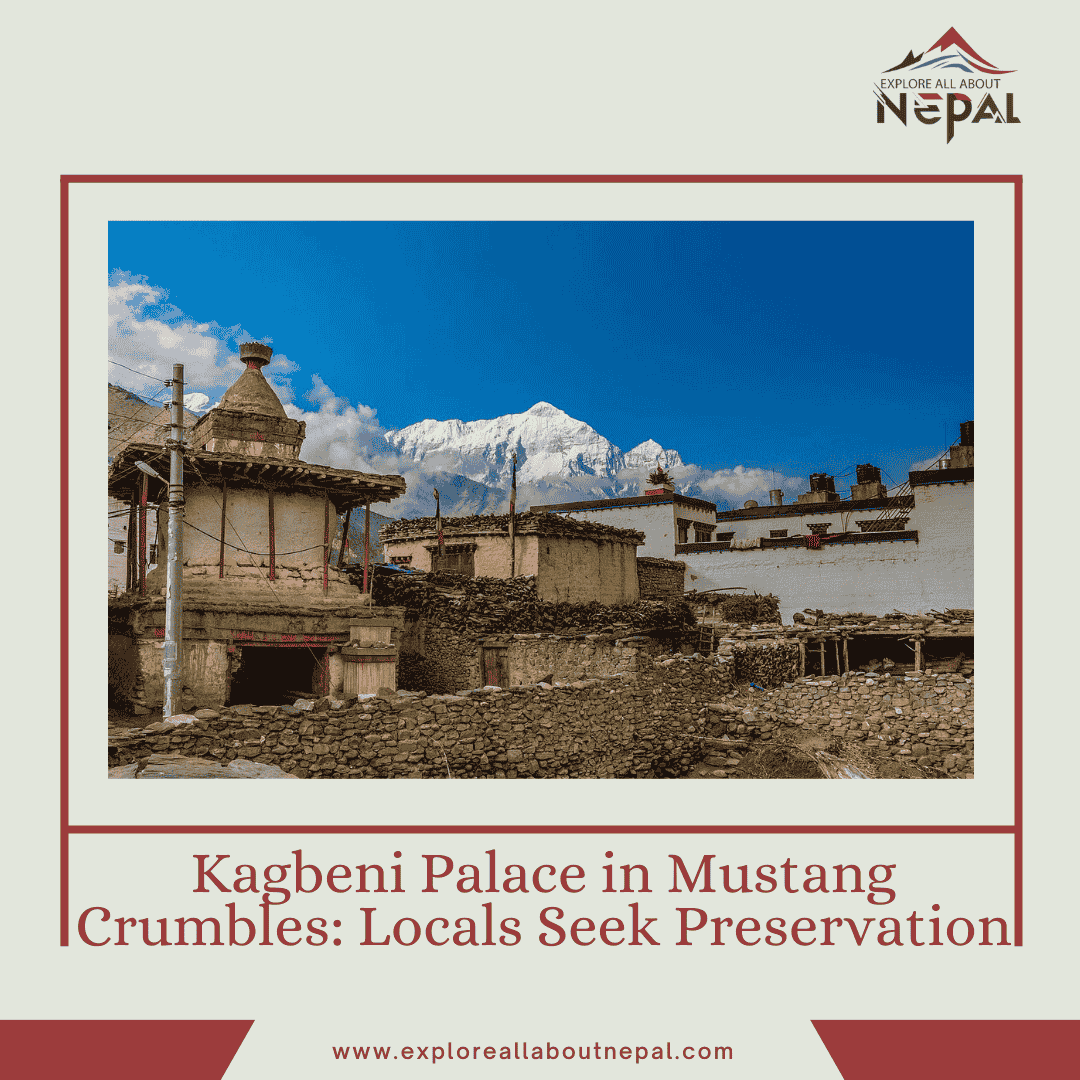Kagbeni Palace, also known as Kag Khar, stands as a testament to Nepal’s rich history and cultural heritage. Situated in the village of Kagbeni within the Mustang district, this 108-room fortress once played a pivotal role along the historic Salt Trade Route. Today, however, the palace faces significant deterioration due to prolonged neglect, prompting local communities to advocate for its preservation and transformation into a museum.

The Historical Significance of Kagbeni Palace
Kagbeni Palace’s strategic location at the confluence of the Mustang and Muktinath valleys made it a crucial fortified site in ancient times. The village’s layout, characterized by narrow alleys leading to interior courtyards, reflects its historical role as a defense stronghold against both natural elements and potential invaders. The central ruins of the palace serve as a poignant reminder of Kagbeni’s importance in regional trade and politics.
Current State of the Palace
Despite its historical and cultural value, Kagbeni Palace has suffered from years of neglect. The once-majestic structure now lies in ruins, with its architectural integrity compromised by environmental factors and a lack of maintenance. The deterioration of such a significant monument not only diminishes the village’s cultural landscape but also poses the risk of losing invaluable heritage.
Community Calls for Preservation
Recognizing the palace’s deteriorating condition, local residents have voiced strong support for its restoration and conversion into a museum. They believe that such an initiative would not only safeguard the structure but also serve as a cultural hub, educating visitors about the region’s rich history and traditions. The establishment of a museum could also stimulate local tourism, providing economic benefits to the community.
Precedents in Mustang: Restoration Efforts
The Mustang region has witnessed successful restoration projects in the past. For instance, the Lo Manthang Palace underwent significant restoration following damage from the 2015 earthquake. This project, supported by organizations like the Gerda Henkel Foundation, highlights the feasibility and benefits of preserving such historical sites. Similar efforts could be mobilized for Kagbeni Palace, leveraging both local initiatives and international support.
To ensure the preservation and revitalization of Kag Khar Palace, a collaborative approach is essential:
Stakeholder Collaboration: Engage local communities, government agencies, non-profits, and international organizations to pool resources and expertise.
Awareness Campaigns: Educate the public and potential donors about the palace’s significance and the urgency of its preservation.
Funding Initiatives: Explore grants, crowdfunding, and partnerships to secure necessary financial resources.
Sustainable Planning: Develop restoration plans that consider environmental sustainability and long-term maintenance.
Community Involvement: Empower local residents by involving them in restoration work, museum operations, and tourism services.
The Potential of a Kagbeni Museum
Transforming Kagbeni Palace into a museum offers multiple advantages:
Cultural Preservation: A museum would serve as a repository for artifacts, traditions, and stories, ensuring that the rich heritage of the Mustang region is documented and celebrated.
Educational Opportunities: Both locals and visitors would gain insights into the historical significance of Kagbeni and its role in regional trade and politics.
Economic Benefits: Increased tourism can lead to job creation and boost local businesses, fostering sustainable community development.
An example of such an initiative is the Kagbeni Museum, located within the Red House Lodge. This museum showcases Tibetan prayer wheels, thangka paintings, and local fossils, offering visitors a glimpse into the area’s cultural richness.
Steps Forward: Collaborative Preservation
For the successful restoration and conversion of Kagbeni Palace, a collaborative approach is essential:
Government Involvement: Engaging local and national government bodies to secure funding and policy support for the project.
Community Engagement: Empowering local residents to participate actively in the preservation process, ensuring that their voices and interests are represented.
International Partnerships: Seeking assistance from international heritage organizations can provide technical expertise and additional funding.
The plight of Kagbeni Palace underscores the broader challenges of heritage conservation in Nepal. By prioritizing the restoration of such sites, we not only honor our past but also pave the way for a culturally enriched future. The collective efforts of communities, governments, and international partners can ensure that treasures like Kagbeni Palace continue to inspire and educate for generations to come.


